Hwee-Pink Tan
Deep Activity Recognition Models with Triaxial Accelerometers
Oct 25, 2016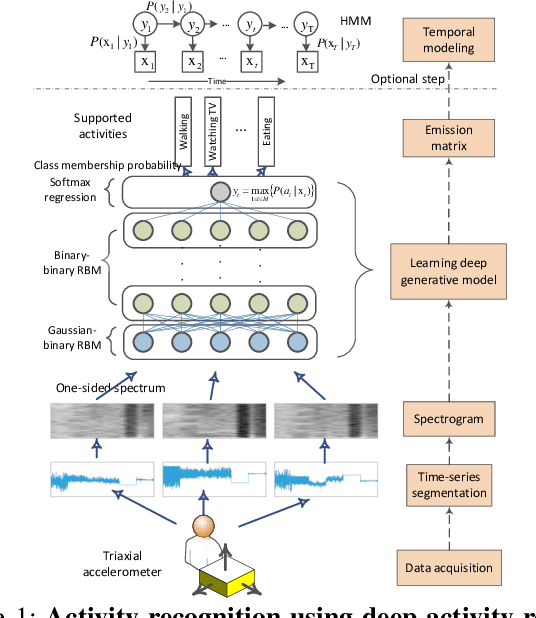

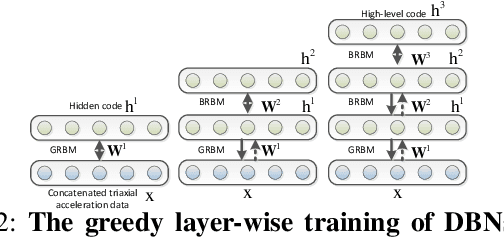

Abstract:Despite the widespread installation of accelerometers in almost all mobile phones and wearable devices, activity recognition using accelerometers is still immature due to the poor recognition accuracy of existing recognition methods and the scarcity of labeled training data. We consider the problem of human activity recognition using triaxial accelerometers and deep learning paradigms. This paper shows that deep activity recognition models (a) provide better recognition accuracy of human activities, (b) avoid the expensive design of handcrafted features in existing systems, and (c) utilize the massive unlabeled acceleration samples for unsupervised feature extraction. Moreover, a hybrid approach of deep learning and hidden Markov models (DL-HMM) is presented for sequential activity recognition. This hybrid approach integrates the hierarchical representations of deep activity recognition models with the stochastic modeling of temporal sequences in the hidden Markov models. We show substantial recognition improvement on real world datasets over state-of-the-art methods of human activity recognition using triaxial accelerometers.
Mobile Big Data Analytics Using Deep Learning and Apache Spark
Feb 23, 2016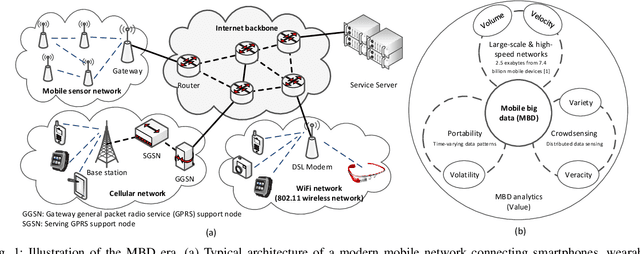

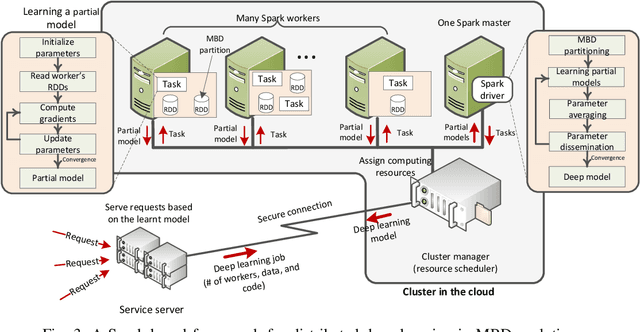
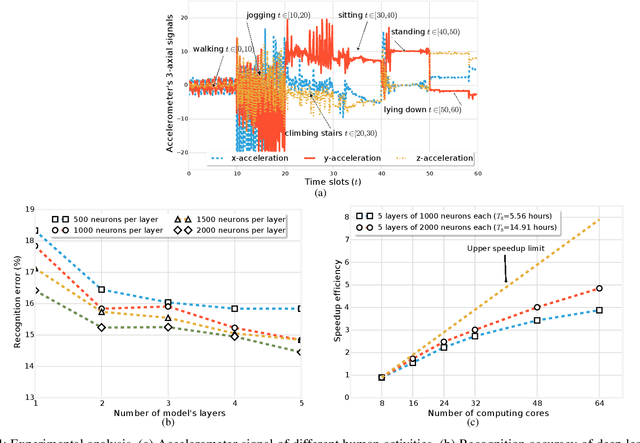
Abstract:The proliferation of mobile devices, such as smartphones and Internet of Things (IoT) gadgets, results in the recent mobile big data (MBD) era. Collecting MBD is unprofitable unless suitable analytics and learning methods are utilized for extracting meaningful information and hidden patterns from data. This article presents an overview and brief tutorial of deep learning in MBD analytics and discusses a scalable learning framework over Apache Spark. Specifically, a distributed deep learning is executed as an iterative MapReduce computing on many Spark workers. Each Spark worker learns a partial deep model on a partition of the overall MBD, and a master deep model is then built by averaging the parameters of all partial models. This Spark-based framework speeds up the learning of deep models consisting of many hidden layers and millions of parameters. We use a context-aware activity recognition application with a real-world dataset containing millions of samples to validate our framework and assess its speedup effectiveness.
Toward a Robust Sparse Data Representation for Wireless Sensor Networks
Aug 02, 2015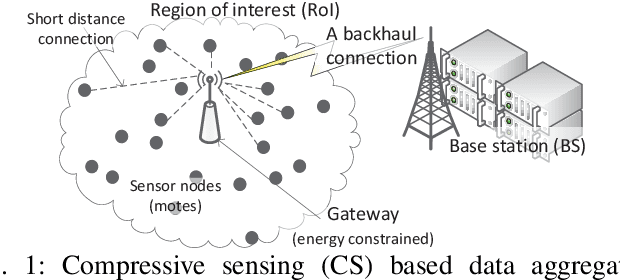
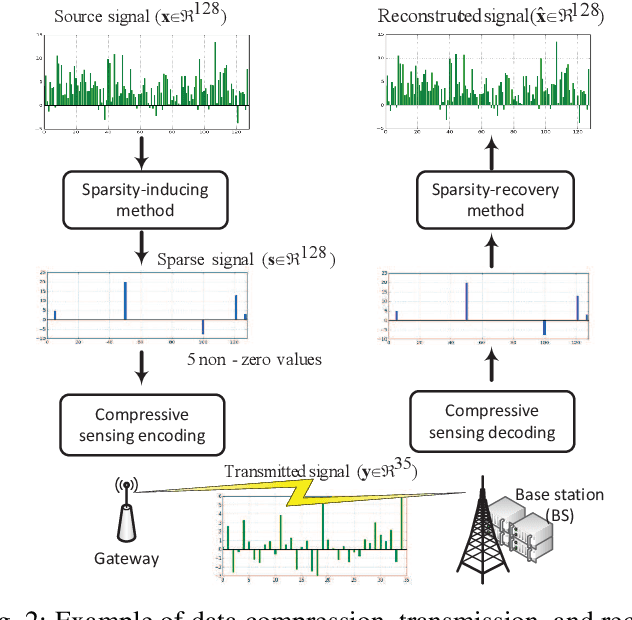
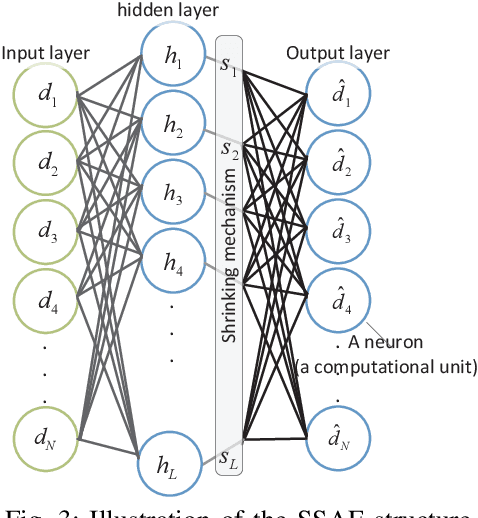

Abstract:Compressive sensing has been successfully used for optimized operations in wireless sensor networks. However, raw data collected by sensors may be neither originally sparse nor easily transformed into a sparse data representation. This paper addresses the problem of transforming source data collected by sensor nodes into a sparse representation with a few nonzero elements. Our contributions that address three major issues include: 1) an effective method that extracts population sparsity of the data, 2) a sparsity ratio guarantee scheme, and 3) a customized learning algorithm of the sparsifying dictionary. We introduce an unsupervised neural network to extract an intrinsic sparse coding of the data. The sparse codes are generated at the activation of the hidden layer using a sparsity nomination constraint and a shrinking mechanism. Our analysis using real data samples shows that the proposed method outperforms conventional sparsity-inducing methods.
* 8 pages
Machine Learning in Wireless Sensor Networks: Algorithms, Strategies, and Applications
Mar 19, 2015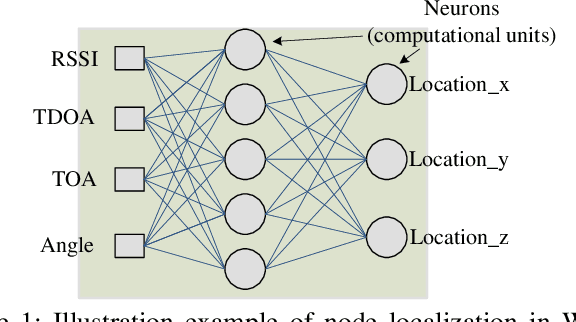
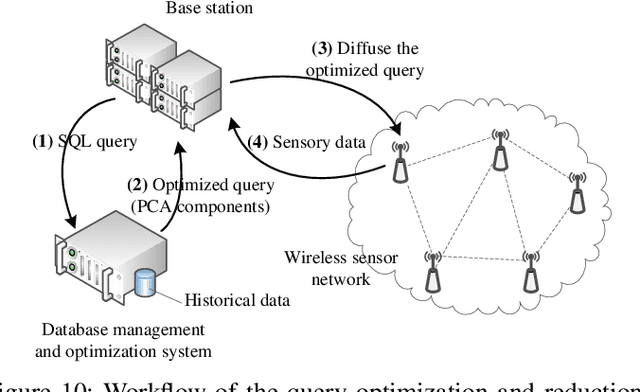
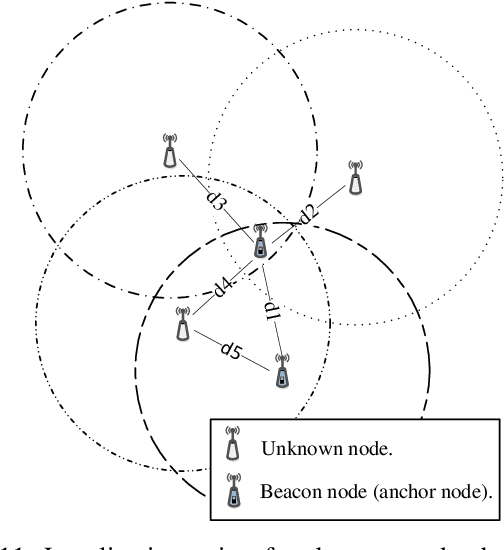

Abstract:Wireless sensor networks monitor dynamic environments that change rapidly over time. This dynamic behavior is either caused by external factors or initiated by the system designers themselves. To adapt to such conditions, sensor networks often adopt machine learning techniques to eliminate the need for unnecessary redesign. Machine learning also inspires many practical solutions that maximize resource utilization and prolong the lifespan of the network. In this paper, we present an extensive literature review over the period 2002-2013 of machine learning methods that were used to address common issues in wireless sensor networks (WSNs). The advantages and disadvantages of each proposed algorithm are evaluated against the corresponding problem. We also provide a comparative guide to aid WSN designers in developing suitable machine learning solutions for their specific application challenges.
* Accepted for publication in IEEE Communications Surveys and Tutorials
 Add to Chrome
Add to Chrome Add to Firefox
Add to Firefox Add to Edge
Add to Edge